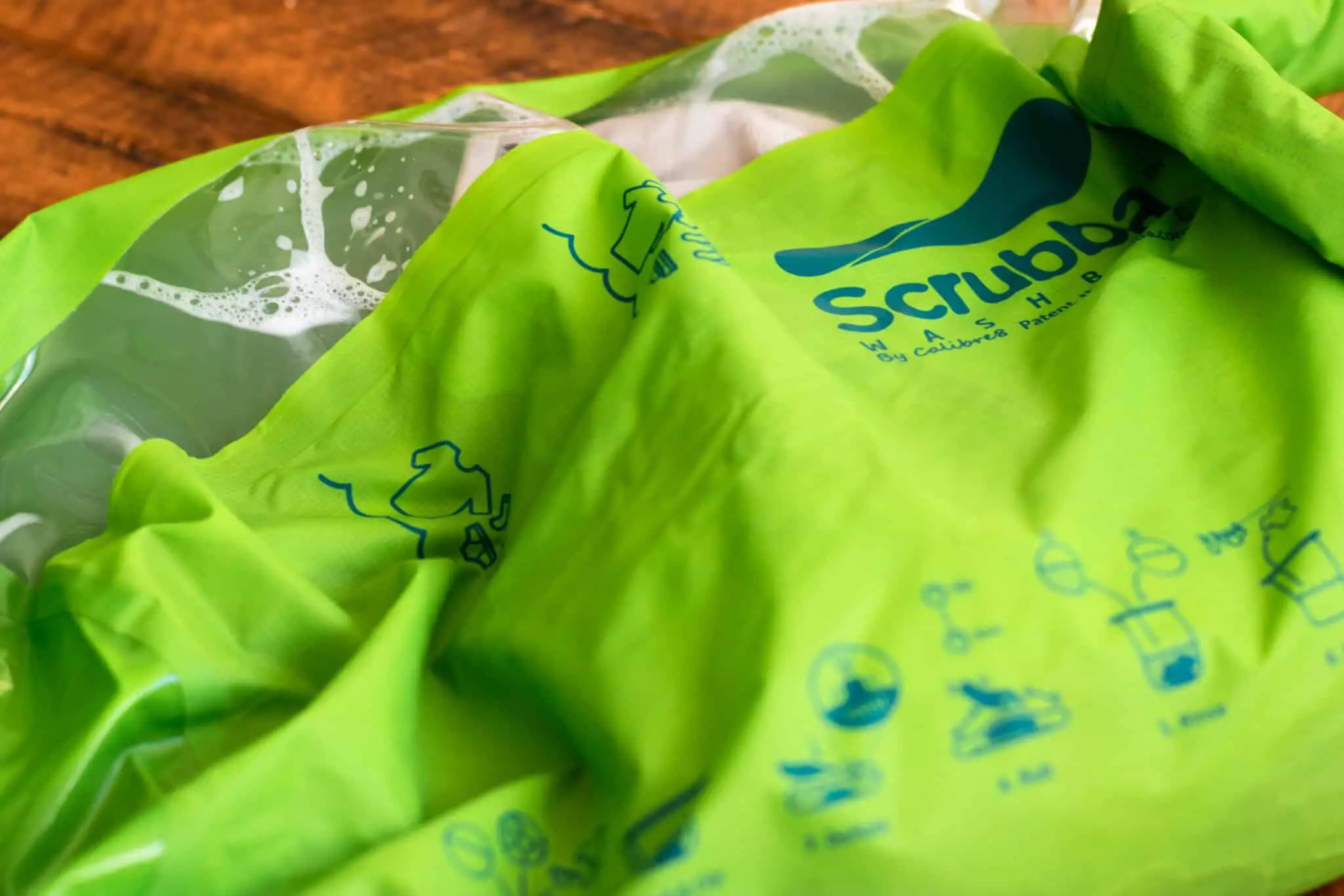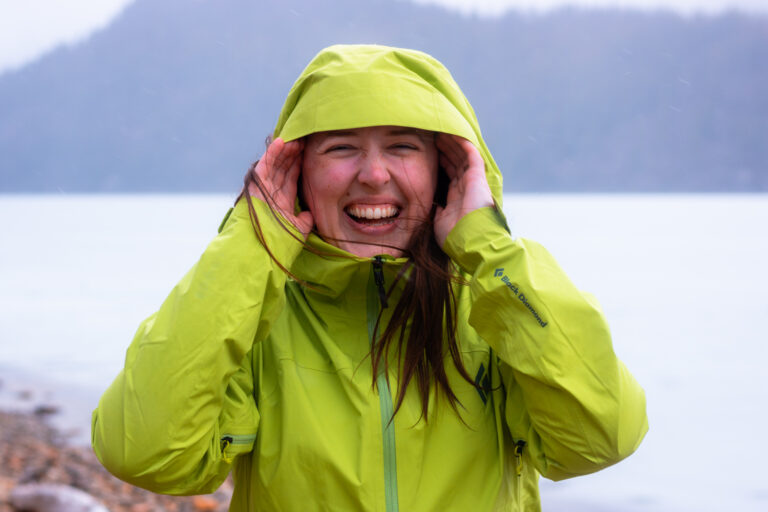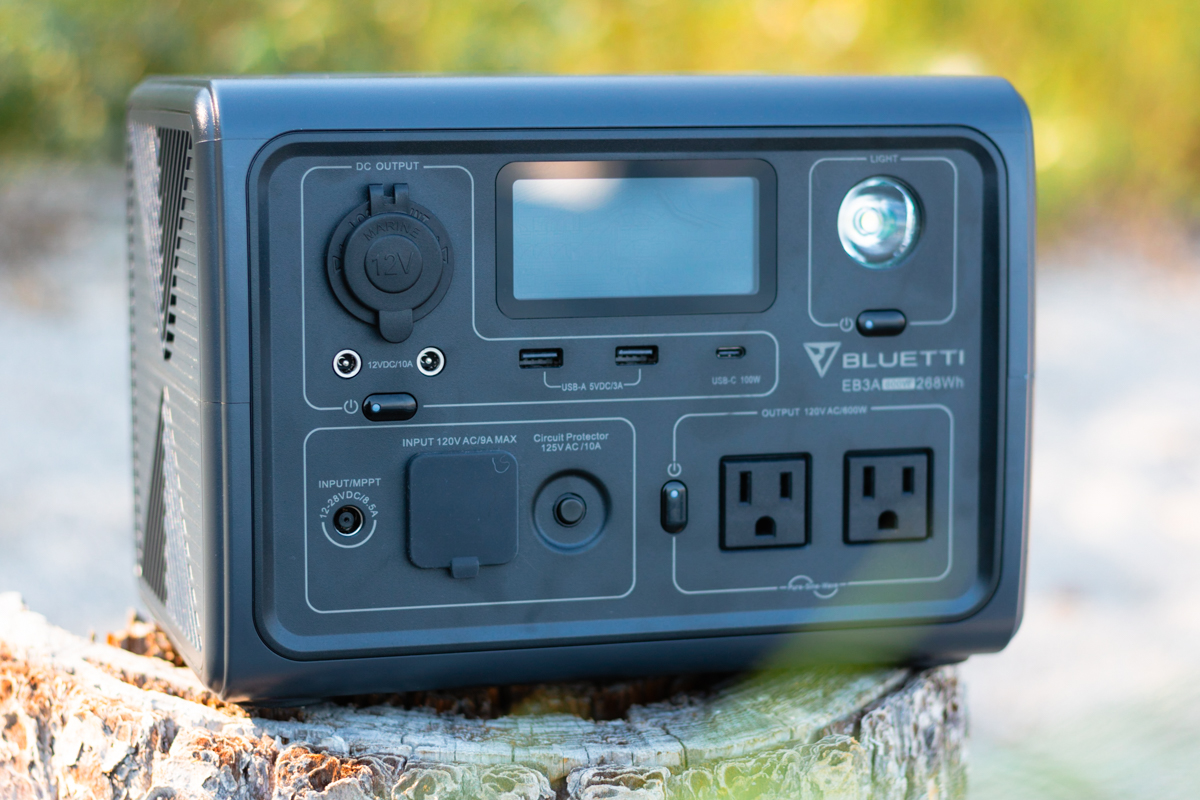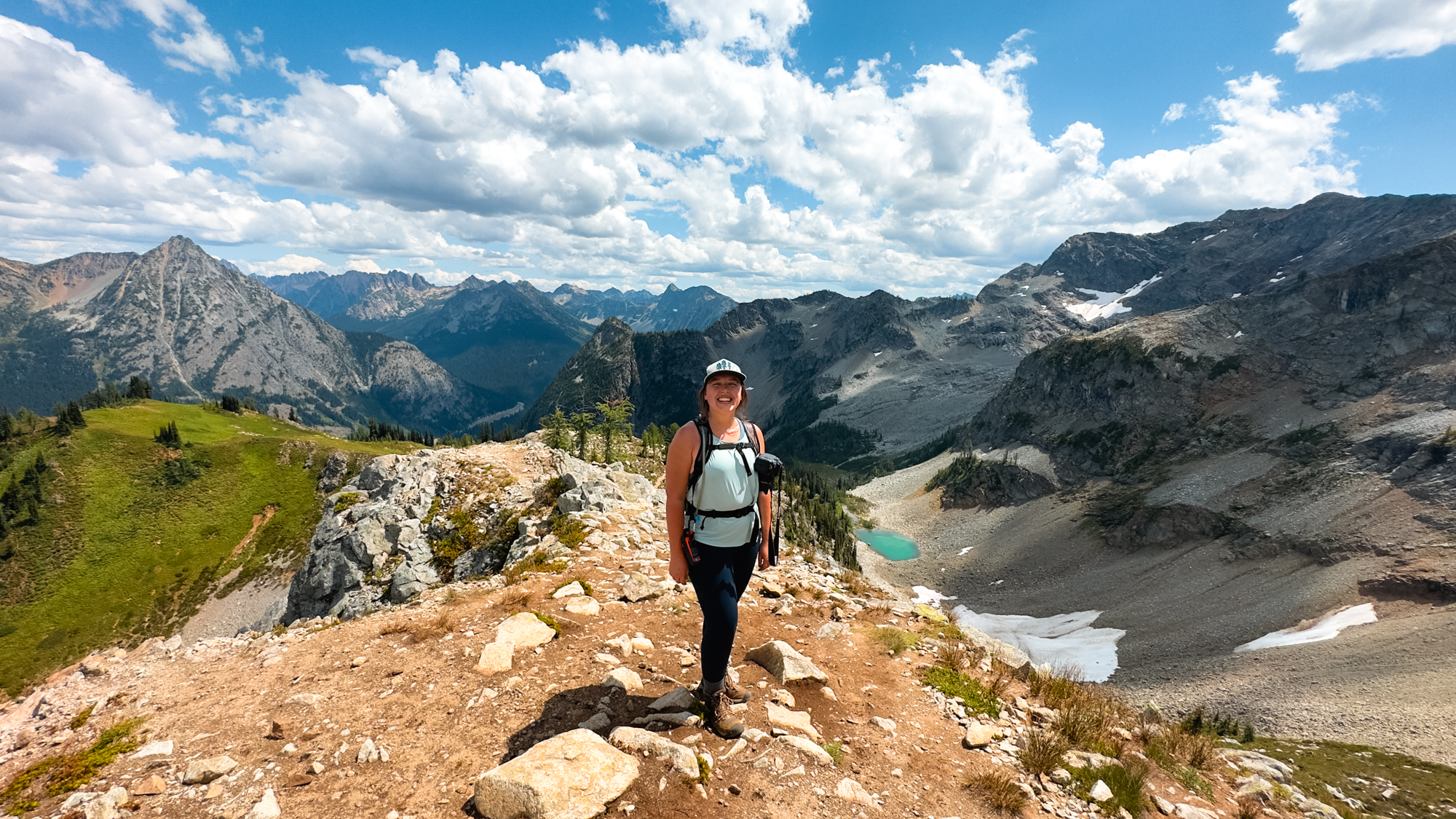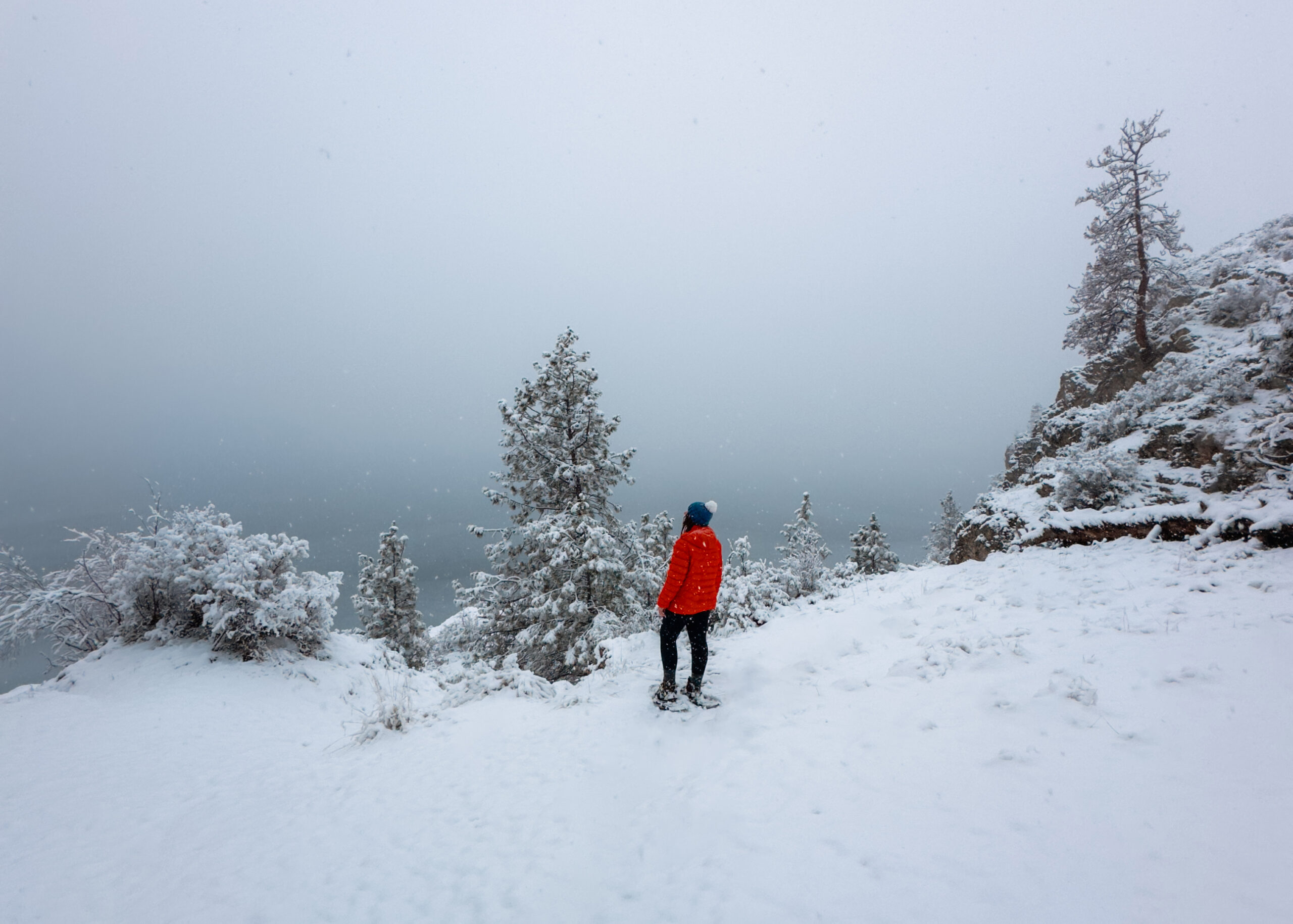Guide to Choosing & Buying a Down Jacket
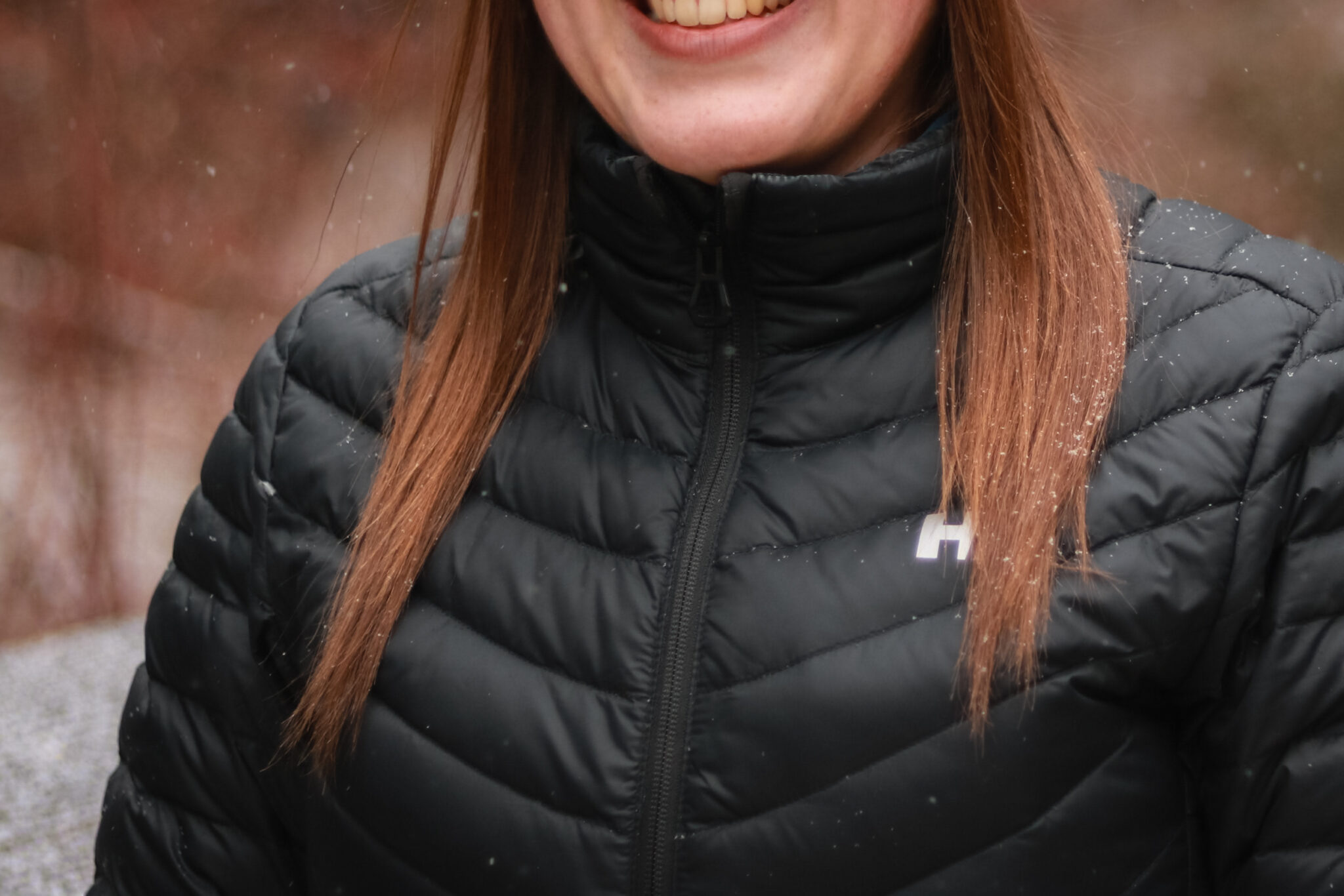
Are you on the hunt for a new down jacket but not sure where to start? Are you lost in the sea of specs, trying to figure out the difference between fill loft, ratio, and weight and what the heck are baffles or hydrophobic down? And why are there so many numbers?
Whoa, whoa. Let’s slow down for a sec. Buying a down jacket can seem like a daunting task, but it doesn’t have to!
A down jacket is a big investment, so it’s important you feel confident in your decision and know exactly what you’re looking for when head to the (online) store, but it shouldn’t stress you out. So, let’s dive into the world of down jackets!
What is Down?
First things first, what is down?
Well, down is the natural, soft insulating layer underneath a bird’s feathers that keep it warm and the down used in jackets usually comes from geese or ducks. It looks like tiny pieces of fluff and is white or grey. Down is full of millions of tiny air pockets that trap heat.
Ethical Considerations
Naturally, down raises ethical concerns. It’s usually a by-product of the food industry where live-plucking, force-feeding, and other terrible treatment of birds has been a huge issue.
Thankfully, there’s been a huge shift away from that recently.
Many outdoor brands are now following the Responsible Down Standard (RDS), Advanced Global Traceable Down Standard (Global TDS), or partnering with Allied Down which advocates for the welfare of birds. If a company uses responsibly sourced down, they’ll label it.
Recycled Down
Down can easily be recycled without changing its performance or durability. According to Patagonia, consumers are demanding recycled down and many brands are using more and more of it.
Although recycled down is nothing new in the bedding industry, it is in the world of outdoor gear and it’s great to see the narrative shifting towards reuse.
What’s So Great About Down?
You’ve probably heard that down is basically the Holy Grail for outdoorsy people. But why? What makes down so awesome that people will shell out literally hundreds of dollars for it?
Well, the quick answer is that down is one of the best insulators on earth. Even scientists can’t make a material nearly as warm, lightweight, and durable as down! Isn’t nature awesome? Plus, stuffing down into a backpack won’t damage it (unlike its synthetic counterpart). Down jackets and sleeping bags will keep you warm without taking up tons of space or weight which is why outdoorsy people love it.
The long answer is a little more complicated. I could get into all the science of down, but honestly, that’s not super important for choosing a jacket. What is important, though, are things like fill loft, ratio, and weight. Yup, it’s time to dive into the specs.
Down vs Synthetic
I won’t go into a ton of detail in the down vs synthetic war, but there are a few things you should consider before you buy a down jacket because maybe synthetic will work better for you!
Pros of Down
- Down has the best warmth-to-weight ratio
- Down compresses smaller than synthetic material
- Down will keep you warm for years longer because the material doesn’t break down as quickly as synthetic
Cons of Down
- Down loses its warmth when wet
- Down comes from birds
- Down jackets are (usually) less durable than synthetics because down can escape from tiny holes
- Down is much more expensive than synthetic
Defining the Specs of Down
The world of down is filled with words that you might not be familiar with. Even though there are lots of specs to consider when choosing a down jacket, once you know what they mean it won’t be nearly as confusing.
Fill Power
Fill power determines the down’s quality and is measured from 400 to 1,000. The higher the number, the better the down — it’ll bounce back better from being compressed, has more air pockets, and you’ll need less to keep warm.
500-650 is considered good quality, 700-750 is very good, 800+ is excellent, and 1,000 is almost unheard of. The average down jacket has 550-650 fill power, which is a great balance between quality and affordability. Jackets above 700 aren’t as common and are more expensive.
Brands love to advertise a jacket’s fill power and sometimes go as far as stitching it into the jacket itself. This is usually the easiest spec to find.
Fill Weight
Fill weight is the amount of down in the jacket. Simply put, the heavier the fill weight, the warmer the jacket. Fill weight is an important spec, but it’s hard to find. Brands love to tell you the fill power, but not fill weight (which is annoying). If you can’t find the spec, customer support usually has the answer.
Why does fill weight matter? Because brands like to mislead you, boasting about their high fill power jacket that might not actually keep you warm enough. If you’re simply concerned about warmth, a 900-fill-power, 45g-fill-weight down jacket will be similar in warmth to a 450-fill-power, 100g-fill-weight jacket. However, the first does have a better warmth-to-weight ratio and will be more compressible, lightweight, and expensive. But that doesn’t automatically make it better.
And that, my friends, is key to finding a jacket that’s warm enough and fits your budget! Fill-power isn’t the be-all-end-all that brands would like you to think. You need to compare fill power and fill weight to make an educated decision.
Down-to-Feather Ratio
The down-to-feature ratio measures the amount of down vs feathers in a jacket; you might think a down jacket is only filled with down, but that’s not the case. Unfortunately, this is another difficult spec to find. If the spec isn’t in the product description, check a brand’s about pages because the ratio is usually the same for all their products. If all else fails, you can always contact their customer support.
The higher the first number (which refers to down), the warmer the jacket will be. High-quality down jackets have a minimum of 80-20 down-to-feather ratio. This ensures the jacket’s warm, but not overly bulky. Some super high-end jackets have 90-10 which is about as good as it gets. Jackets that are 70-30 are good for shoulder seasons or above 0°C.
If the ratio is lower, it’s not automatically a terrible jacket but it’ll likely be bulkier and heavier, but a lot more affordable. Again, it’s all up to what works best for you.
Denier or D
Denier (D) is the durability of a jacket’s shell (its outer fabric). You’d think if you’re paying big bucks that your jacket would last forever and get you through all kinds of adventures, but that’s probably not true. Why?
Well, a down jacket’s shell thickness is measured in denier (D) and the lower the number, the thinner the fabric. A thin fabric is a lot easier to damage, but it’s also a lot lighter which is why many of the expensive, ultralight jackets are super delicate.
Fabric over 20D is good for casual adventurers or everyday users — it’ll hold up well to normal activities without being overly heavy. But if you’re really concerned about weight, you can venture into the 15D and below range — just know that the fabric will be super thin, feel weird, and be easy to snag. It’ll probably also be transparent, which might make your jacket look dirty because you’ll be able to see the down through the fabric. Yeah, it’s that thin.
DWR & Hydrophobic Down
Water and down don’t get along. When down gets wet, it clumps together and stops insulating — uhh, no thank you! Luckily, most down jackets these days come with some sort of moisture protection so you’re not totally screwed if you find yourself in the rain or snow.
Most down jackets have a durable water repellent (DWR) treatment on the outer shell that makes them water-resistant. Moisture will bead up and run off the jacket instead of soaking into the fabric. DWR works fairly well for light moisture or rain, but in a downpour, you’ll quickly get soaked through.
Hydrophobic down is down treated to resist moisture, which means it’ll work even if it’s wet. Before you get too excited, it still can’t get drenched, but it won’t lose its head if it gets a little wet. Hydrophobic down is becoming more common but is by no means an industry standard.
And finally, some down jackets are actually waterproof. A waterproof, 2-or-3 layer jacket will be a lot heavier than those without, but you’ll stay warm and dry.
Distribution of Down
The location of down in a jacket is another spec that’s often overlooked, but it’s simple: does the down cover the entire jacket or only the torso?
If there’s little to no down in the sleeves or hood, your arms and head will get cold pretty quick.
Unfortunately, this is a hard spec to find on most jackets. Some brands like Canada Goose give you this info, but if you can’t find it, don’t be afraid to ask them. You should know what you’re buying!
Jacket Baffles
The well-known down “puffer” look is no accident. These baffles distribute the down evenly throughout the jacket and keep it in place (it would be pretty useless piled at the bottom of your jacket). There are two types of baffle construction and they affect how well a jacket keeps you warm.
Sewn-Through Baffles
Sewn-through baffles are the most common style of down jacket construction. They’re easy to make and don’t use very much material, which makes them cheap to produce. This makes them the most affordable style.
But this type of construction comes with drawbacks. The pockets of down are small and heat easily escapes at the stitching because it goes through the entire jacket. Sewn-through baffles look like this:
Box-Wall Baffles
Box-wall baffles are most often found in high-end down jackets. They’re more complicated to make and use more material than sewn-through baffles, which make them the more expensive option.
As you’d expect, box-wall baffles perform better. They allow down to fully expand and because the stitching doesn’t go all the way through the jacket, there’s much less heat loss. Box-wall baffles look like this:
Wide vs Narrow Baffles
Sewn-through and box-wall aren’t the end to the baffle saga. You’ll also need to decide between wide and narrow baffles.
Wide baffles have more down with fewer seams than narrow baffles. However, wide baffles are a lot bulkier and harder to compress. If you’d rather be super warm, go for wide baffles. But if you’d rather an active, slim fit, then you’ll want to choose narrow baffles.
Features
And finally, there are lots of additional features you can choose from. Ultimately, though, these features all boil down to personal preference because what’s good for one adventure, might not be the best for another.
For example, if you want an ultralight jacket you’ll forgo most features, whereas you’ll get a lot more bells and whistles with a bulkier jacket.
Pockets
- Handwarmer pockets: These are normal pockets and all but the lightest jackets have them. If you’ll be hiking, do they sit above your backpack’s waist belt? Are they a good size?
- Internal vs external chest pockets: Internal pockets are insulated better and help preserve batteries, but they’re harder to access.
- Internal stash pocket: These are similar to internal pockets, except that they’re unzippered. They’re good for keeping gloves, hats, and other miscellanous things.
Hood
Hoods are totally optional. They help keep you warm, but they do add a lot of bulk. If you’re wearing a few layers and your down jacket is a mid-layer, you probably don’t need a hood. But again, it’s up to you.
Drawcords
Drawcords help keep out cold drafts and wind. They’re usually along the bottom hem but are sometimes at the waist, hood, or wrist as well.
Stuffable
Sometimes down jackets come with a stuff sac, other times they compress into their pocket or hood. It’s a great way to store your jacket when you’re not using it.
Finding the Right Down Jacket
Now that you’ve learned a ton about down jackets, let’s find a jacket for you (or at least point you in the right direction). I wish it were as simple as finding the jacket with the highest fill power and fill weight, but as you’ve just learned, it’s not quite that easy. Besides, that would probably be a super expensive jacket that doesn’t meet your needs!
What you need to do is determine how you’ll be using your jacket. Will you be doing lots of hiking in the shoulder seasons? Will you be mountaineering in the dead of winter? Do you need a casual jacket for running errands? Does it get super cold where you live?
As you can see, there are lots of different situations you might find yourself in and it’s certainly not a one-jacket-fits-all situation, here. While the difference between a casual jacket and a sub-zero parka seems obvious, it’s more likely you’ll fall somewhere between the two. But where? Let’s dig into it!
Lightweight Down Jackets
Lightweight down jackets are probably the most common and for good reason! They’re super versatile, small, and weigh almost nothing. They’re great for shoulder seasons, summer nights, or as a mid-layer in the winter because they provide enough warmth to keep the chill away. Plus, they pack up super small and can easily be stored in a backpack or suitcase without taking up much room or weight.
But what’s considered a lightweight down jacket? While there’s no hard and fast rule, a lightweight down jacket often has a fill-weight of about 3 to 4 ounces and weighs about 12 ounces total.
Unless you’re an ultra-lightweight backpacker or super concerned about weight, you don’t need to get the lightest jacket on the market, one in the higher weight range, or even slightly above, will be fine.
Patagonia Down Sweater
The Patagonia Down Sweater is a popular lightweight down jacket for outdoor and everyday use. It’s extremely versatile and is more affordable than some of the lighter options.
Mountain Hardware Ghost Whisperer
The Mountain Hardware Ghost Whisperer is an ultra-lightweight jacket. It’s an extremely warm down jacket and has consistently been voted a favourite for years.
Feathered Friends Eos Down Jacket
The Feathered Friends Eos Down Jacket is a fantastic marriage of weight and warmth. It’ll keep you toasty warm and cozy, however, it does tend to wear faster than the above options.
MEC Boundary Light Down Jacket
The MEC Boundary Light Down Jacket is a solid cost-friendly lightweight jacket. While it’s not as compressible or warm as the above jackets, it’s good for everyday use and layering.
Midweight Down Jackets
Midweight-down jackets are super underrated, they’re sort of like the forgotten middle child of the down jacket family.
They’ll keep you warm into the high zeros, but aren’t nearly warm enough for freezing winter temperatures. As for weight, they’re certainly heavier than lightweight jackets because they’re made with more down and durable material, but they’re still fairly packable. They work great in mildly cold climates or particularly cold shoulder seasons.
While there’s no hard and fast rule, a midweight down jacket often has about 4 to 6 ounces of down and weighs just over 1 pound total.
Patagonia Fitz Roy Down Hoody
The Patagonia Fitz Roy Down Hoody is a step up from the Down Sweater. It’s warmer and has more features, making it a solid mid-choice. It’s great for casual hiking or everyday use.
Rab Microlight Alpine Jacket
The Rab Microlight Alpine Jacket is a great, weather-resistant midweight option. Although it’s called “microlight”, its fill weight lands it in the midweight category.
Mountain Equipment Senja
The Mountain Equipment Senja is a super versatile midweight down jacket. It’s not as packable as some of the other midweight jackets out there, but it’s warm enough to wear into the negatives with just a t-shirt underneath and is great for winter hiking or everyday use.
Heavyweight Down Jackets
Last but not least are heavyweight down jackets which will keep you toasty warm in less-than-ideal winter temperatures.
True to their name, heavyweight down jackets are heavy duty. These jackets have the highest fill weight, weather-resistant shells, large hoods, and sometimes have long torsos to keep your butt and legs warms.
As expected, heavyweight jackets are just that; heavy. They usually have over 5 oz of down and weigh closer to two pounds, although you can find lighter ones. These jackets aren’t packable and you probably won’t be lining up to stuff them into your backpack anytime soon, but you’ll be toasty warm.
Rab Neutrino Pro
The Rab Neutrino Pro is a great down jacket for winter activities, including skiing, snowshoeing, and other alpine adventures. It’s super warm and comes packed with features like insulated pockets, drawcords, and a hood.
Patagonia Jackson Glacier Jacket
The Patagonia Jackson Glacier Jacket is a solid choice for everyday winter wear. It has a stylish design that’s packed full of 700-fill-power down and will keep you warm as you run errands. There’s also a parka version if you want more protection.
Feathered Friends Helios
The Feathered Friends Helios jacket is made for winter adventures and will keep you super warm. It’s perfect for snowshoeing, winter hiking, mountaineering, or any other winter activity you have in mind.

